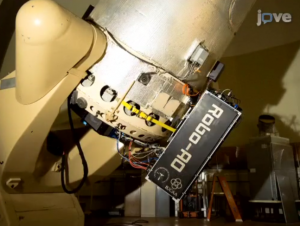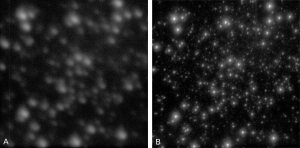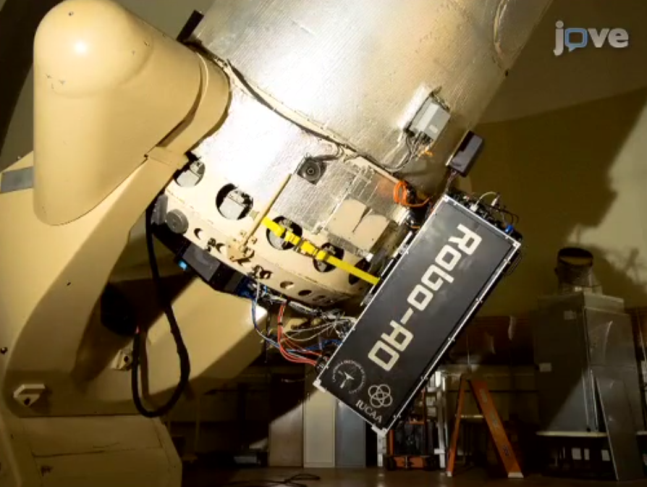On this World Space Week JoVE’s Engineering section editor, Dr. Jialan Zhang talks about using a robotic system to get a better view of space.
Nowadays, we can observe the stars not only with our eyes but also with telescopes. When using a ground-based telescope, it can be challenging to observe astronomical objects because light from the objects must travel through the earth’s turbulent atmosphere before it can be imaged. Therefore, the angular resolution is not only limited by the diameter of a telescope’s main lens, but it is also affected by the turbulent atmosphere. Although it is possible to use telescopes in orbit that are above the turbulent effect of the atmosphere and can achieve their theoretical resolving power, like the Hubble Space Telescope, the cost to build and maintain satellite observatories is huge.
In 2012, an economical and robotic laser adaptive optics system was successfully developed to correct the atmospheric turbulence and to improve the angular resolution. The operation of the system was demonstrated in a JoVE Video Article published in 2013.

This Robo-AO laser adaptive optics system, engineered by Christoph Baranec, Reed Riddle, Nicholas Law, A. N. Ramaprakash and their collaborators can significantly increase the clarity of astronomical images acquired from ground-based telescopes. As a result, it enables the discovery of star systems that would otherwise be impossible to view through atmospheric turbulence directly.

Figure Legend: Images of the globular cluster Messier 3, adapted from Figure 6, J. Vis. Exp. (72), e50021, doi:10.3791/50021 (2013). (A) A 44 × 44 arc second field-of-view, a 2-minute long uncompensated image of the core of the globular cluster Messier 3 in z-band (λ = 830 – 950 nm). (B) The same image is shown with adaptive optics correction using Robo-AO revealing many stars that could not otherwise be seen.
After operating at Caltech’s Palomar Observatory in San Diego for three years, the Robo-AO laser adaptive optics system was moved to the telescope at Kitt Peak in Arizona in November 2015. Thanks to this system, we can explore and understand the universe better using clearer images from space.



